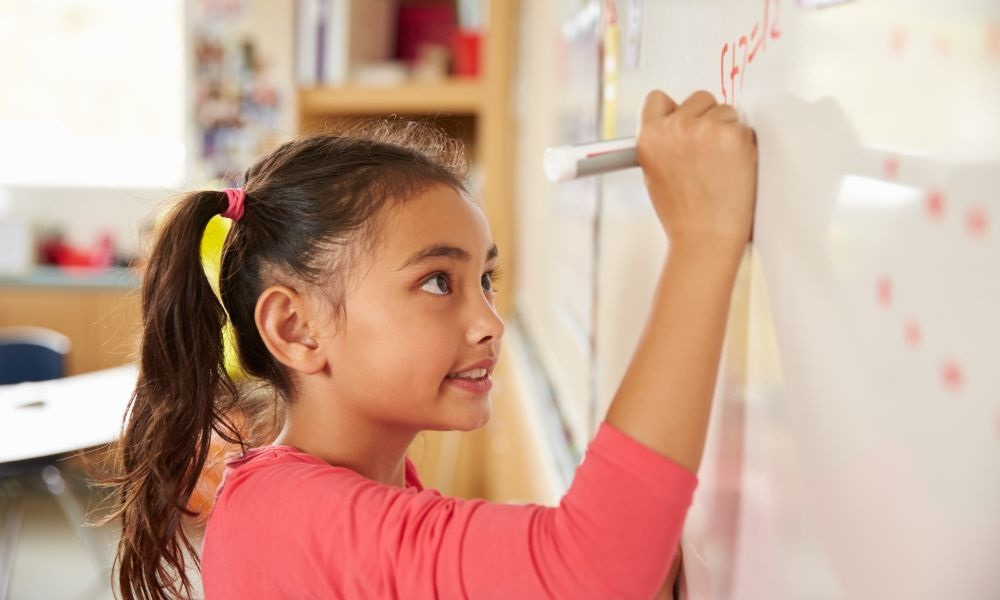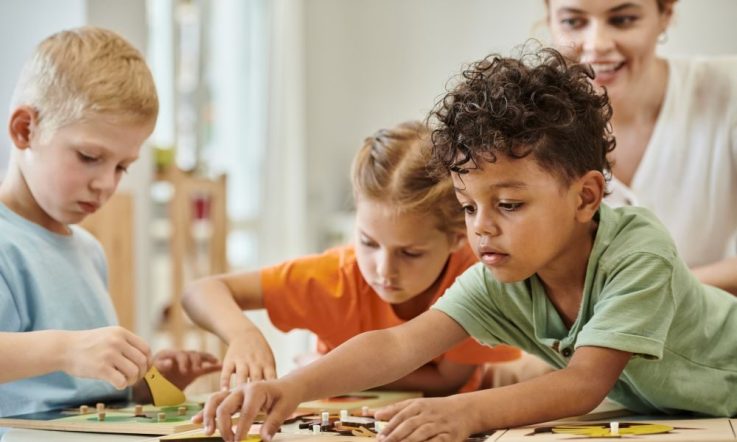Run like a girl – our influence on children’s dispositions to learning, life, and school
During Superbowl XLIX, a commercial aired across America showing young women and men’s responses when asked to ‘run like a girl’ or ‘throw like a girl.’ Most flounced around theatrically, saying things like, ‘Ooh, my hair.’
When younger girls, like 10-year-old Dakota, were asked the same question, they sprinted across the stage or mimed a powerful pitch.
It’s worth watching, or rewatching if you’ve seen it before. I find it moving every time. Search ‘Run Like a Girl commercial’ on YouTube to see it.
The ad – created for the #LikeAGirl campaign launched by Always in 2014 – highlights how girls’ confidence can drop during puberty and how the humiliating messages our society sends, often unintentionally, can have a significant impact. Phrases like ‘you fight like a girl’ undermine girls’ self-belief. In other words, we do this to them.
As parents, teachers, and members of society, we send countless signals to our children. Whether intended or not, these messages shape their expectations, anxieties, hopes, confidence, and self-doubt. This is not only about gender. Our influence can shape any of our children’s dispositions towards learning, life, and school.
While that Superbowl commercial aired a decade ago, research published in recent months has shown how students’ dispositions to learning are shaped by us, and how these dispositions in turn influence achievement.
The latest Trends in International Mathematics and Science Study (TIMSS) surveyed over 650,000 students across 63 countries. It found that Australia and France share the unenviable top spot for the largest gender gap in Year 4 mathematics performance (Wernert et al., 2024).
This result has troubled me ever since. With few exceptions, boys and girls receive the same teaching in the same environments. So, what is driving the difference?
The prestigious journal Nature recently published a major French study involving 2.3 million children, showing that the emergence of the maths gender gap is not primarily due to age, or other background factors, but to the experience of being at school (Martinot et al., 2025). It seems we do this to them too.
The study has many dimensions, discussed in detail in an episode of Teacher magazine’s Global Education podcast series (Vukovic, 2025), so I won’t unpack them all here. But the researchers found that although girls start school just as capable as boys in maths, their dispositions towards the subject decline over time with a significant impact on achievement.
The ‘nature versus nurture’ debate inevitably arises. Could the gap be innate, encoded within our genes? This seems unlikely: other countries do not show the same large gap in the TIMSS data, and the French study addresses the question directly. Researchers compared children born just days apart but placed in different year groups.
If nature were responsible, it should be all about age and there would be no difference in performance between the 2 groups. If nurture were the cause, differences in the experience of schooling would lead to different results. Their research conclusion was clear: the extra year of schooling widens the gender gap in mathematics.
This is a confronting finding. The researchers point to adults’ beliefs and stereotypes – including teachers’ implicit assumption that ‘boys possess innate talents whereas girls progress only through diligence and effort’ – as potentially undermining girls’ confidence (Martinot et al., 2025).
Parents may also unconsciously assume boys are better at maths, influencing how they treat their children, particularly triggered by starting school (see, for example, research from Copur-Gencturk et al., 2023, Gunderson et al., 2012; and Tiedemann, 2000).
Are we really signalling to girls that they ‘learn maths like a girl’? It appears so.
Competitive, time-limited maths tests tend to work against girls, and other research has shown that female teachers’ maths anxiety lowers girls’ performance, but not that of boys (Beilock et al., 2010).
Interestingly, this gap is larger among children from higher socioeconomic backgrounds – the opposite of what is often seen in many other education outcomes. The reasons are unclear, but the finding echoes PISA 2022 data from Australia: male students outperform female students in maths, and the gap is larger in non-government schools than in public schools. In reading, girls outperform boys, with the gap again smaller in public schools (De Bortoli et al., 2023)
If we are turning our girls away from maths, we are not only limiting young people’s maths achievement but also narrowing their future pathways, and robbing ourselves of potential engineers, scientists, technical tradespeople, and future teachers in these learning areas.
Here the focus has been on gender differences in primary school because of the recent Nature paper and TIMSS data, but there is a broader underlying issue: the role of student dispositions in learning and achievement. Curriculum design, assessment methods, and policy guidance and resources all shape teachers’ practices. If these do not support the development of positive dispositions to learning, at best we miss an opportunity for higher achievement; at worst, we slam the door on some young people’s future learning and economic participation.
This is not about cheering from the sidelines or handing out participation prizes. It is about the need to respond to clear evidence that our children’s experience of schooling shapes both their learning and their futures.
References
Beilock, S. L., Gunderson, E. A., Ramirez, G., & Levine, S. C. (2010). Female teachers’ math anxiety affects girls’ math achievement. Proceedings of the National Academy of Sciences, 107(5), 1860-1863. https://doi.org/10.1073/pnas.0910967107
Copur-Gencturk, Y., Thacker, I., & Cimpian, J. R. (2023). Teachers’ race and gender biases and the moderating effects of their beliefs and dispositions. International Journal of STEM Education, 10(1), 31. https://doi.org/10.1186/s40594-023-00420-z
De Bortoli, L., Underwood, C., & Thomson, S. (2023). PISA 2022. Reporting Australia’s results. Volume I: Student performance and equity in education. Australian Council for Educational Research. https://doi.org/10.37517/978-1-74286-725-0
Gunderson, E. A., Ramirez, G., Levine, S. C., & Beilock, S. L. (2012). The role of parents and teachers in the development of gender-related math attitudes. Sex Roles, 66(3), 153-166. https://doi.org/10.1007/s11199-011-9996-2
Martinot, P., Colnet, B., Breda, T., Sultan, J., Touitou, L., Huguet, P., ... & Dehaene, S. (2025). Rapid emergence of a maths gender gap in first grade. Nature, 1-10. https://www.nature.com/articles/s41586-025-09126-4
Tiedemann, J. (2000). Parents' gender stereotypes and teachers' beliefs as predictors of children's concept of their mathematical ability in elementary school. Journal of Educational Psychology, 92(1), 144-151. https://doi.org/10.1037/0022-0663.92.1.144
Vukovic, R. (Host). (2025, July 24). Global Education Episode 27. [Audio podcast episode]. The maths gender gap in the early years. Teacher magazine. https://www.teachermagazine.com/au_en/articles/global-education-episode-27-the-maths-gender-gap-in-the-early-years
Wernert, N., Schmid, M., & Rodrigues, S. (2024). TIMSS 2023 Australia. Volume 1: Student performance. Australian Council for Educational Research. https://doi.org/10.37517/978-1-74286-755-7



